Something which I’ve been asked a lot about of late is “Can you target fats spots or spot reduce?” Well… the easy answer is no, exercises such as sit ups will not create a 6 pack and no diet alone with ever ensure that body fat drops off from problem areas alone. Body fat is burned but not in the area that is working, training does not work like that. Charles Poliquin even states that spot reduction is a myth.
“The promise of spot reduction is an obsession that many in our culture just won’t abandon.” – Charles Poliquin
I was on a course and was told that to get a 6 pack is easy! It’s a by product from training hard in a functional way that engages all the body muscles working and eating clean.
Now the hard answer…
I believe you can by correcting the imbalances in your hormones if that is the identified problem by your personal trainer – it could simply be that it is your diet. Remember everyone is an individual and a full assessment by your personal trainer should be carried out, if you’re not assessing you’re guessing! For a deeper look at troublesome spots and links with hormones it is worth having blood samples taken to be analysed by a professional. Poliquin shows that the advancements in exercise endocrinology may give new tools for combatting site specific fat storage and the system to do this is called BioSignature Modulation. I haven’t studied this course as of yet and I am hoping to get on it later in the year. I know plenty of trainers who have undertook this course to learn the system and swear by it.
From what I have found and researched the main aspect to achieve correction of imbalanced hormones is to address your lifestyle and eating habits. This may involve detoxing or cleansing your system by expelling the toxins being store in your body along with using strategies such as carb cycling, fasting and shorter work outs etc. This can lead to the restoring of the body’s natural ability to heal itself. Once its healed and your beginning to work correctly in the way we were designed to do you will be at full centralisation.
Paul Chek recommends having an organic diet otherwise you’re eating dangerous food. Remember, fat is where you store toxins (and excess hormones) that you can’t break down due to not having enough nutrition on board to run the detoxify pathways. By getting your metabolic rate to optimal and you can do this by moving at least 20 minutes a day, even walking. You need eight hours of sleep at night from 10pm in order to restore the body systems and you need to get enough water into you.
As you may be aware I follow teachings by Paul Chek, Charles Poliquin, Robb Wolf, Paul Mort, Travis Jones and have researched this topic from Patrick Holford, Nish Joshi and Shawn Talbott to name a few and I am by no means a leading world expert but I have done work with individuals based on the learning from the above and has seen much better results than that of other methods I used when I worked in gyms.
To stress the importance of hormones I’m going to quote Paul Mort…
“Neither diet or nutrition matter if your hormones are out of sync.”
Hormones are involved in most physiological processes thus making them very relevant to many aspects of exercise. They influence where and how you store body fat, research has shown that cortisol and insulin promote fat collection and that testosterone increases fat loss.
The research that I have looked into and what I have been taught on courses proves that it is more than likely the imbalance of hormones that cause certain areas to store body fat and the 6 most common stubborn fat spots are:
- Love Handles
- Stomach Fat
- Bra Bulge Fat
- Bingo Wings
- Big Thighs & Bottom
- Moobs
Before I go into each of the fat spots mentioned above I will first highlight in basis terms what hormones are and how they work. In order to do this I will direct reference two definitions that I feel sum up hormones:
“Hormones are chemical messengers that are secreted into the blood by one tissue or organ and act on target cells in other parts of the body.” – J.Kang, 2012
“Hormones act as chemical signals throughout the body.” - J.Wilmore & D.Costill, 2004
So hormones are messengers that travel around your body via blood to give orders to your cells to do things. Hormones can be broken down into two types;
Steroid hormones: These hormones have a chemical structure similar to cholesterol and are lipid soluble and diffuse easily through cells membranes. These are hormones form the adrenal cortex (cortisol and aldosterone), the ovaries (estrogen and progesterone), the testes (testosterone) and the placenta (estrogen and progesterone).
Nonsteroid hormones: These hormones are not lipid soluble so they can not diffuse easily through cells membranes. These hormones can be divided into two further groups: protein or peptide hormones and amino acid-derivative hormones.
Hormones can affect your growth, puberty, metabolism, weight, figure, shape, physical appearance, reproductive behaviour and emotions.
The thyroid gland is located below the larynx and secretes two important nonsteroid hormones which regulate metabolism by increasing the metabolic rate of most tissues and the basal metabolic rate by as much as 100%. These hormones according to (J.Wilmore & D.Costill, 2004) also promote rapid cellular uptake of glucose and enhance lipid mobilisation, increasing free fatty acid (FFA) availability for oxidation, this is something I want you to think about as you read on.

Another you have properly heard of is the Adrenal gland this sits directly atop of the kidneys and is made up of the inner adrenal medulla and the outer adrenal cortex and each one secretes hormones that are different.
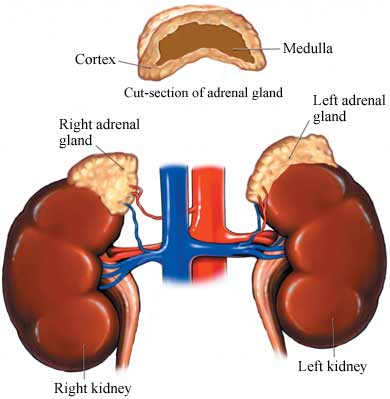
So how do they do this and affect the body to such a degree?
As I’ve mentioned earlier hormones are secreted into the blood in order to be transported to target cells, these cells are where hormones have their effect. Target cells are able to work hand in hand with hormones because they have receptors that blind and lock them together, much like a lock and key. Only the correct key can unlock the action within the cell, Wilmore & Costill (2004) refer to this as a hormone-receptor complex. When there is an increased amount of specific hormone there is a decrease in the number of cell receptors available to it, making the cell less sensitive to that hormone as less hormones can blind due to the fewer amount of receptors. Wilmore & Costill (2004) refer to this as down-regulation or desensitisation. The opposite effect is called up-regulation, these two processes change cells sensitivity to hormones.
Believe it or not there are some receptors that promote the breakdown of fat and some that actually block the breakdown of fat and research shows that there are two types of adrenoceptors that control not only fat cell metabolism but also blood flow into and out of the fat cell.
If we look at Beta-receptors these are the ‘good’ receptors, they increase lipolysis and adipose tissue blood flow while the naughty alpha-receptors inhibit lipolysis and adipose tissue blood flow.
So why tell you this and does it really matter?
Yes it matters, especially when different areas of body fat have different distributions of alpha-2 and beta-2 adrenoreceptors! This basically mean that fat can be mobilised and transported out of them by the blood in an effective or ineffective manner. A clear example of this is the lower body fat found on the hips and thighs – which have been found to have roughly nine times as many alpha-2 receptors as beta-2 receptors = stubborn fat or in scientific terms “elevated alpha 2 trap” and studies have shown that the blood flow in your lower body fat can have 67% lower blood flow than other depots. So with 67% lower blood flow you now have 67% less chance of removing the fat compared to areas of the body that are not storing fat as these areas transport fat away more effectively to be burned up.
So lets now have a look at two of these common stubborn fat spots!
Love Handles
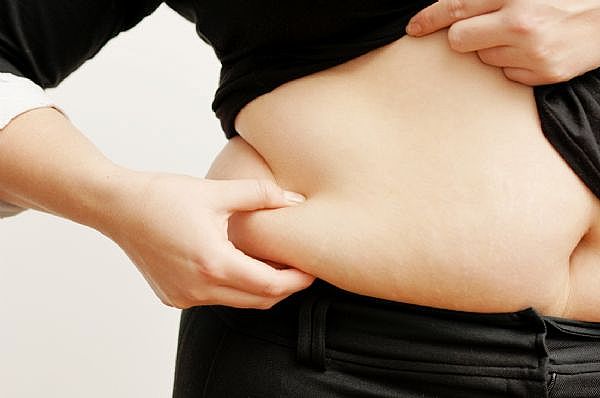
Love handles can be typically seen on the area above your hips (as seen in the pic). The cause of this can be put down to an insulin issue indicating that your body need help handling the carbohydrates and sugar that is in your current diet. Normally insulin regulates blood glucose levels and directs excess glucose to the liver and muscles where it is stored as glycogen ready to fuel the demands of the body. In Robb Wolf’s simple terms “insulin puts nutrients into our cells.” Wolf goes on to explain that “insulin is released from the beta cells of the pancreas primarily in response to increasing blood levels of glucose and amino acids playing a significant role in micronutrient storage and conversions.”
Foods that absorb into the blood stream slowly are classed as having a low glycaemic load while foods that absorb fast have a high rating based on the glycaemic index rating of food and portion size. If you chose a clean and manily low GL foods you can prevent sugar peaks and energy dips. Keeping your blood sugar stable will great for love handle control.
The problem arises with your diet or better put modern day diets which are high in sugar, just look at the cereals and drinks below! You may not even be aware of these hidden sugars and on average we can consume as much as 30 teaspoons every day!

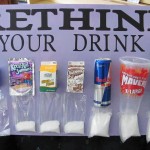
This abnormal amount of sugar found in the modern diet can lead to a condition called insulin resistance which leads to adult onset diabetes due to not managing blood sugars correctly or storing glucose properly. When this happens more insulin is produced in order to control any excess glucose this means fat accumulates in the fat tissue. Where as if insulin levels are low, fatty acids are mobilised from the fat tissue and fat deposits shrink. In some some people with obesity for example the number of insulin receptors on their cells appear to be reduced. Their bodies response by increasing insulin as mentioned above to obtain the same degree of plasma glucose control as normal healthy people.
Even worse is high-fructose corn syrup which is found in every processed food imaginable and according to Loren Cordain PhD “powerfully promotes insulin resistance.”
So did our stone age ancestors never have sugar? In actual fact they did have sugar in the form of honey, dates and figs – these sources of food weren’t always available due to the seasons. Loren Cordain PhD and Joe Friel MS show in the paleo diet for athletes that you don’t have to ban all sweets and can “eat all the fresh fruits that you like, and have certain spices such as vanilla, ginger, mint leaves, cinnamon and nutmeg to recipes.”
Stomach Fat
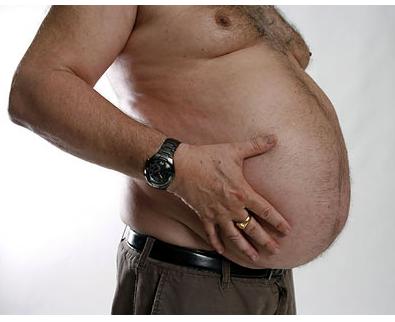
“The thickness of your umbilical skin fold (belly button) is a reflection of your cortisol output and is a direct reflection of your stress levels and their ability to handle it” says Charles Poliquin.
Stomach fat can be caused by stress (burnout), lack of sleep, bad diet etc. So when Joe Bloggs decides it’s time to get fit and hit the roads or joins a gym and starts doing lots of cardiovascular training and a bit of weights here and there he could in actual fact first benefit by following a more mindfulness programme, to help manage his lifestyle better and get happy, Alejandro Junger mentions in his book Clean that the adrenalin and cortisol created during stress also speed up the acidifying process and backs up the use of following a mindfulness practice.
It is in the adrenal gland that we will find the zona fasciculata which is responsible for the production of cortisol. We will also find the adrenal medulla in the adrenal gland which produces adrenaline. Both cortisol and adrenaline are produced when we find ourselves in stressful situations.
If we look at adrenaline first: adrenaline is produced in small amounts to regulate normal blood pressure, check out the picture below and take note at the size of the vessels and the size of the white arrows which is adrenaline. Nothing going on there to worry about but…

During stressful situations or during a event where we are forced in to a fight-or-flight response.
From watching the video you can clearly see that large amount of adrenaline are produced very quickly and have a dramatic effect on the body. All in case we need to run away or fight, basically so the body is ready for action.
- Raises blood sugar levels by stimulating the liver to change glycogen into glucose
- Causes fatty tissue to release fat into the blood along with protein
- Increases the heart rate
- Increases the speed of breathing
- Increases blood flow to the muscles
- Reduces blood flow to the skin and the intestines
- Widens the bronchioles
- Dilates the pupils

Look at the difference in the size of the vessels which have now vasodilated, which means there has been a widening of the blood vessels and the flow of the blood is increased which in turns carries more adrenaline hence one reason why the white arrow are bigger. The adrenal gland also produces more adrenaline which is the other reason the white arrows are bigger, so more adrenaline produced to fill a wider vessel results in ill health.
Shawn Talbott PH.D has a paragraph in his book The Cortisol Connection that I’d like to share with you now.
“In our fast paced, hurry hurry, twenty first century world, almost of all us are stressed out, sleep deprived, and hyper concerned about our diet and food choices. Because of this chronic stress unfortunately most of us are also fat.”
This shows in today’s world, people suffer from stress (in different ways and over different things) and whatever way it is the body will respond to it in the same way which is to produce adrenaline. So this is happening in situations where no physical activity happens and the list for this is endless:
- Sitting exams/deadlines
- Even increasing society and family issues that we read about in the news and see on Jeremy Kyle day in day out
- Work-related pressure and balancing this out with home life
- Money
- Living conditions
- Our appearance
- Driving
- Lack of sleep
- Our status in society working class to upper class
All these and more issues can lead to an unhealthy release of sugar stores into the blood and cortisol causing ill health. Most people relate cortisol to being a stress hormone which is a little misleading Robb Wolf states that cortisol is critical to life and a lack of it results in health problems! you can’t win can you! well in actually fact you can so read on.
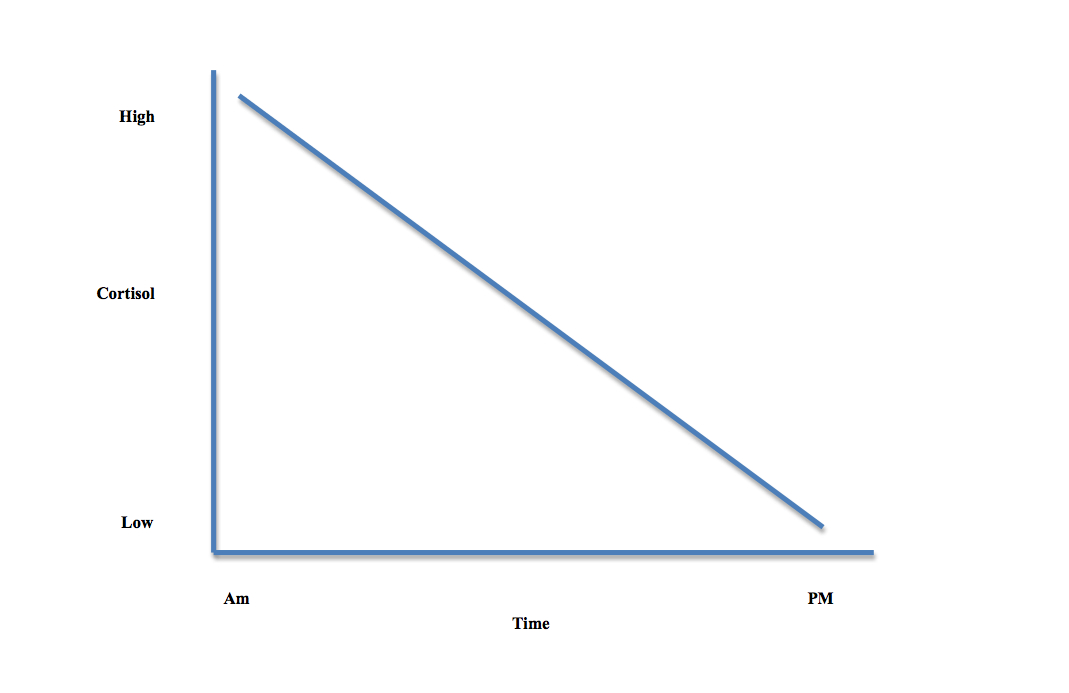
The graph above by Robb wolf shows how a normal day starts for a non stressed person or how it started for our paleolithic ancestors. Am starts with high cortisol levels and this is intended to make sure you are alert and ready to go and by pm when we are winding down its drops. Now how many of us have a normal non stressful day every day or for at least longer than a month? Doesn’t happen does it? Look above again at the list of why people get stressed. How many things did our paleolithic ancestors get stressed over on that list?
Now please don’t think our paleolithic ancestors never got stressed because they did but it most likely never lasted long (acute) or was as chronic as we have as they were too busy surviving the elements. We were built to cope with stress on an acute level that’s why we have the fight-or-flight response. Can we respond to missed mortgage payments in a fight-or-flight response? No we can’t as it has further implementations on what we do or can do in future. This means that our graph above would look more like the one below.
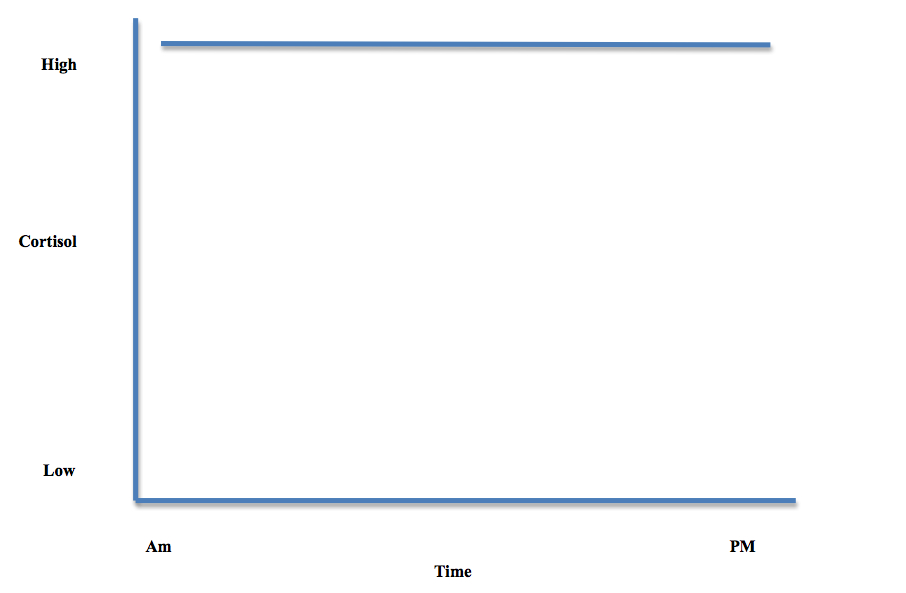
Cortisol wants to break down your muscle and increase body fat, the very things that you hope to avoid. So when the sugar is released into the blood it is then taken by insulin to the cells for energy. The only thing is the cells don’t need the sugar for energy as we are not in a fight-or-flight response as we are just dealing with any of the issues listed above, so where does it go? The body does not want to waste it so it is simply stored as body fat. If we were dealing with a real fight-or-flight response the body would use the sugar up and the body would begin to sort it self out and find its balance.
Long exposure to cortisol according to some leading researchers is where real damage can occur, you can experience any of the following:
- Accelerated ageing
- Stomach fat deposition
- Loss of muscle mass
- Loss of bone mass (Can increase the risk of osteoporosis developing)
- Heart disease
- Potential damage to brain cells
Having a coffee or a cigarette can stimulant your body and produce more cortisol. The real problem with cortisol is the way that it forces itself on to cells, it will dock onto hormone receptors by fighting off progesterone (steroid hormone involved in the female menstrual cycle and it’s also in the male body at lower levels). Cortisol will win over progesterone due to the receptor favouring cortisol, this means the progesterone in woman who are permanently stress is less active. Researchers now believe that progesterone helps to burn fat and stimulate bone building cells called Osteoblasts.
Now once the cortisol is attached to the receptor guess what your body does? It sends a signal to the brain to produce more! and not only that but cortisol increases the production of oestrogen the list below shows how the progesterone and oestrogen effects mostly balance each other out.
Too much oestrogen can lead to oestrogen dominance:
| Effects of Oestrogen | Effects of Progesterone |
| Creates proliferation of the endometrium | Stabilises the endometrium |
| Stimulates breast tissue – tenderness | Protects the breast |
| Increases body fat | Helps break down fat |
| Fluid retention | Natural diuretic |
| Depression | Anti-depressant |
| Suppresses action of thyroid | Facilitates thyroid function |
| Increases blood clotting | Normalises clotting mechanism |
| Decreases libido | Increases libido |
| Interferes with blood sugar levels | Stabilises blood sugar |
| Reduces zinc and retention of copper | Normalises zinc and copper |
| Reduces cell oxygen | Restores cell oxygen |
| Increases risk of endometrial cancer | Protects the endometrium |
| Increases risk of breast cancer | Protects the breast |
| Slows bone breakdown | Builds up bone |
Oestrogen dominance can occur at any age but it is more likely to occur in the years preceding and during the menopause. Just as the progesterone hormone is found in small amounts in the male body so too is the male hormone testosterone found in small amounts in the female body. To much production of testosterone in the female body can lead to a lack of ovulation, low sex drive and development of male characteristics such as facial hair.

According to Jerry Brainum cortisol also plays an important role post-exercise, by helping to supply fat in order to power muscle-protein-synthesis reactions. So cortisol is definitely not all bad it is just a matter of how you manage your lifestyle and training. Jerry goes on to state that an easy way to manage cortisol is to get sufficient rest between exercise sessions, and also enough sleep. Research also shows that a higher protein intake and in-particular branched-chain amino acids, also helps with recovery.
I’ve only touched the tip of the iceberg here everything that I have talked about can lead to you being very unhealthy. This could even cause you to be put in a life threatening situation and that’s one thing we all want to avoid. The good news is that by addressing the situation your in correctly and make key achievable positive changes your body will change for the better.
I hope you have enjoyed this article? If so, please your comments in the box below.
Stay healthy,

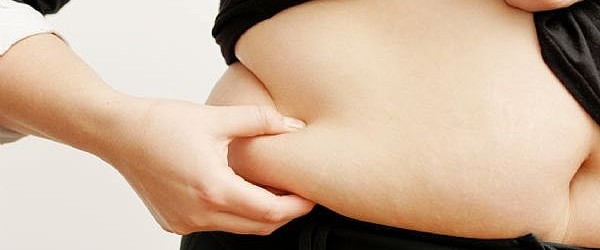












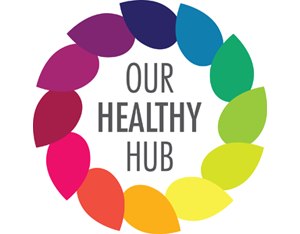
Superb post mate! Really in-depth and well researched.
Great post Luke, loved it.
I really enjoyed reading that Luke, thanks very much. I also agree with the guys above, excellently researched. Rich